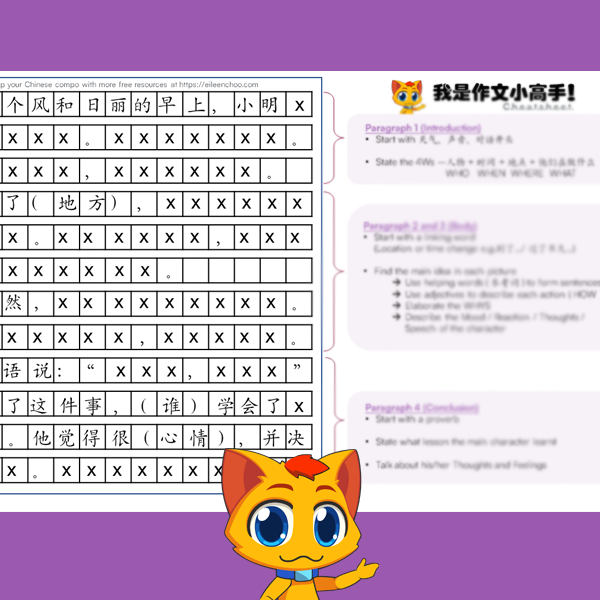Many primary school kids often get confused over the 3 words 的、地、得. As a result, they often make the grammatical mistake of using the wrong de in their Chinese composition. Differentiating between the 3 “de”s is not easily even for adults and their similar pronunciation doesn’t make it any easier.
So what’s the best way to tell the difference between these 3 Chinese characters?
Let me share the trick in this post, so that you’ll know exactly when to use which de in your Chinese compo every time.
The right way to use 的 (de)、地 (de) and 得 (de)
Let’s learn the difference between 的, 地 and 得 one by one and see how to use them in a sentence.
How to use the first Chinese de “的”
This 的 is usually used when we want to express that something belongs to someone. For example, 小明的书包 or 我的家. In the first example, the schoolbag belongs to 小明. It is 小明’s schoolbag. In the second example, the house belongs to me.
Can you see that this 的 works like the “‘s” in English? So the next time you see this 的 (de) appearing in between a person and an object, you’ll know that the object belongs to that person.
Besides that, we can also put this 的 (de) in between an adjective and a noun. For example, 红色的汽车. When we use it in this way, we are describing a property of the object. In this case, the car is red.
How to use the second Chinese de “地”
Then let’s take a look at the second de 地. We often see this 地 between an adjective and a verb. For example, 用心地写字 or 惭愧地道歉. 用心 describes how diligently someone is writing and 惭愧 describes how ashamed the person is feeling while apologizing.
If you need a simple way to remember how to use this 地 (de), you can think of how “–ly” works in English.
Do note that this 地 has another pronunciation. When it is used to mean “ground”, 地 is pronounced as “dì”.
How to use the last Chinese de “得”
The final 得 is used after verbs to describe the degree of the action. For example, 跑得快 or 高兴得手舞足蹈. In both examples, the part that comes after the word de 得 describes the action before it. You run fast and you are so happy that you are dancing.
Just like the word 地, this word also has some alternative pronunciations. It can be read as “dé” or “děi”, but that’s for another Chinese lesson.
Learn the 3 的 (de)、地 (de) and 得 (de)
Check out this video that I made for my primary school kids to teach them about using the correct de for their compo.
Do you know when to use which de now? What other Chinese words do you often get confused? Let me know in the comments below. =)
“的、地、得”这三个字到底有什么不同呢?很多同学在写作文的时候,常常搞不懂的得地的用法,不是把“地”写成“的”,就是把“的”写成“地”,有一些同学甚至选择通通用“的”算了。 “的、地、得”这三个字之间有什么不同?我们几时要用哪一个呢?今天就让朱老师来教大家怎么分辨“的、地、得”的用法吧!学会了的地得怎么用、怎么为的得地造句,大家就不用再为它们烦恼,更不用说在写作文的时候犯错了!






